44 diagram of a crayfish
Eye - Wikipedia Eyes are organs of the visual system.They provide living organisms with vision, the ability to receive and process visual detail, as well as enabling several photo response functions that are independent of vision.Eyes detect light and convert it into electro-chemical impulses in neurons (neurones). In higher organisms, the eye is a complex optical system which collects light from … How to use Otherwise in a sentence - YourDictionary When the pericardium is cut open from above in an animal otherwise entire, the anterior face of the kidney is seen forming the posterior wall of the pericardial chamber; on the deep edge of this face, a little to the left of the attachment of the auricle to the floor of the pericardium, is seen a depression; this depression contains the opening from the pericardium into the kidney.
Rules for fishing gear, methods, and measuring | NZ Government Packhorse rock lobster (crayfish) Measure the tail length along the underside in a straight line from the rear of the calcified bar on the first segment to the tip of the middle fan of the tail. Must have a tail length of at least 216mm (male and female). …

Diagram of a crayfish
Crustaceans: Species, Characteristics, and Diet - ThoughtCo Dec 13, 2019 · Other crustaceans such as crayfish store the spermatozoa for many months before the eggs are fertilized and allowed to develop. Depending on the species, crustaceans disperse eggs directly into the water column, or they carry the eggs in a pouch. Some carry the eggs in a long string and attach the strings to rocks and other objects where they ... Callinectes sapidus - Wikipedia Callinectes sapidus (from the Ancient Greek κάλλος,"beautiful" + nectes, "swimmer", and Latin sapidus, "savory"), the blue crab, Atlantic blue crab, or regionally as the Chesapeake blue crab, is a species of crab native to the waters of the western Atlantic Ocean and the Gulf of Mexico, and introduced internationally.. C. sapidus is of considerable culinary and economic importance in … 3 Major Zones of a Freshwater Lake (With Diagram) - Biology … 3 Major Zones of a Freshwater Lake (With Diagram) ... sprawling odonata nymphs (which have flattened rather than cylindrical bodies), crayfish, isopods, and certain mayfly nymphs. Descending more deeply into the bottom mud are burrowing odonata and ephemeroptera, clams, true worms, snails, chironomids (midges), and other diptera larvae. ...
Diagram of a crayfish. Digital Object Identifier System This is the web site of the International DOI Foundation (IDF), a not-for-profit membership organization that is the governance and management body for the federation of Registration Agencies providing Digital Object Identifier (DOI) services and registration, and is the registration authority for the ISO standard (ISO 26324) for the DOI system. The DOI system provides a … Auckland and Kermadec area fishing rules | NZ Government Labelled diagram of a telson-clipped lobster [PDF, 551 KB] Do not telson clip any packhorse rock lobsters. For more details, check the: rules brochure [PDF, 1.6 MB] the free NZ Fishing Rules app – Apple or Android; rock lobster/crayfish methods page. Video: Telson clipping your crayfish (2.25) Lungs (Human Anatomy): Picture, Function, Definition, Conditions - WebMD WebMD's Lungs Anatomy Page provides a detailed image and definition of the lungs. Learn about lung function, problems, location in the body, and more. Ecosystem - Definition and Examples - Biology Online Dictionary Sep 02, 2021 · Ecosystem Definition. An ecosystem is a system consisting of biotic and abiotic components that function together as a unit. The biotic components include all the living things whereas the abiotic components are the non-living things.Thus, an ecosystem science definition entails an ecological community consisting of different populations of organisms that live …
3 Major Zones of a Freshwater Lake (With Diagram) - Biology … 3 Major Zones of a Freshwater Lake (With Diagram) ... sprawling odonata nymphs (which have flattened rather than cylindrical bodies), crayfish, isopods, and certain mayfly nymphs. Descending more deeply into the bottom mud are burrowing odonata and ephemeroptera, clams, true worms, snails, chironomids (midges), and other diptera larvae. ... Callinectes sapidus - Wikipedia Callinectes sapidus (from the Ancient Greek κάλλος,"beautiful" + nectes, "swimmer", and Latin sapidus, "savory"), the blue crab, Atlantic blue crab, or regionally as the Chesapeake blue crab, is a species of crab native to the waters of the western Atlantic Ocean and the Gulf of Mexico, and introduced internationally.. C. sapidus is of considerable culinary and economic importance in … Crustaceans: Species, Characteristics, and Diet - ThoughtCo Dec 13, 2019 · Other crustaceans such as crayfish store the spermatozoa for many months before the eggs are fertilized and allowed to develop. Depending on the species, crustaceans disperse eggs directly into the water column, or they carry the eggs in a pouch. Some carry the eggs in a long string and attach the strings to rocks and other objects where they ...




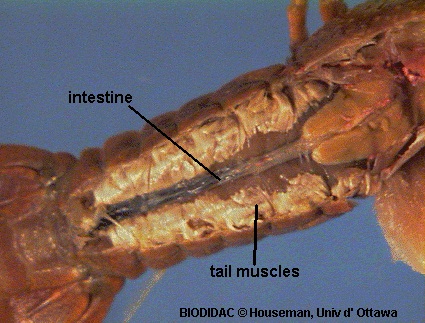


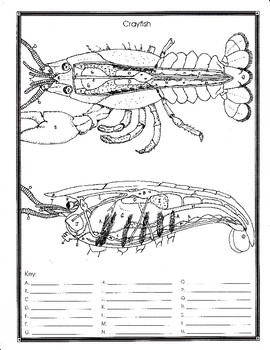






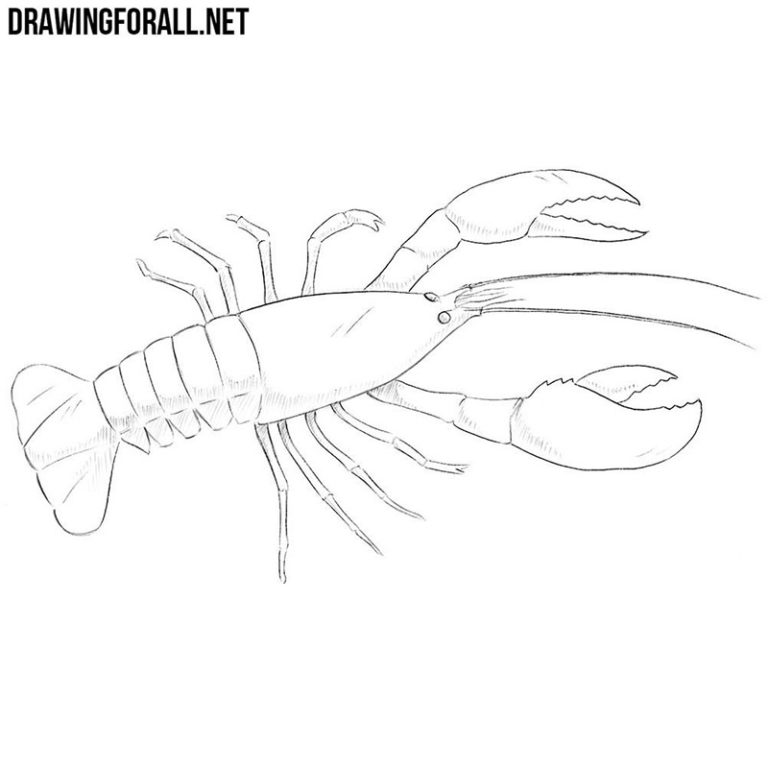











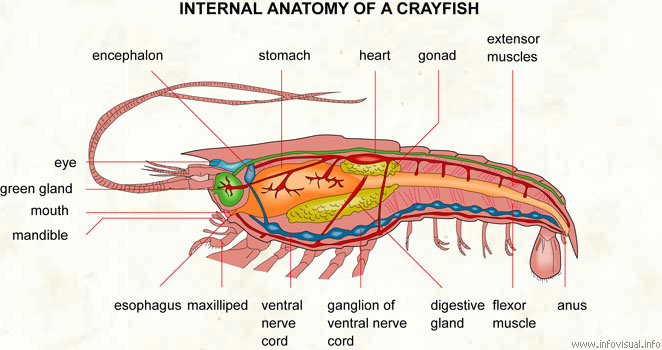

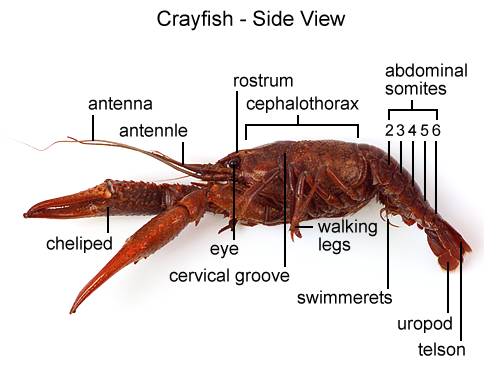




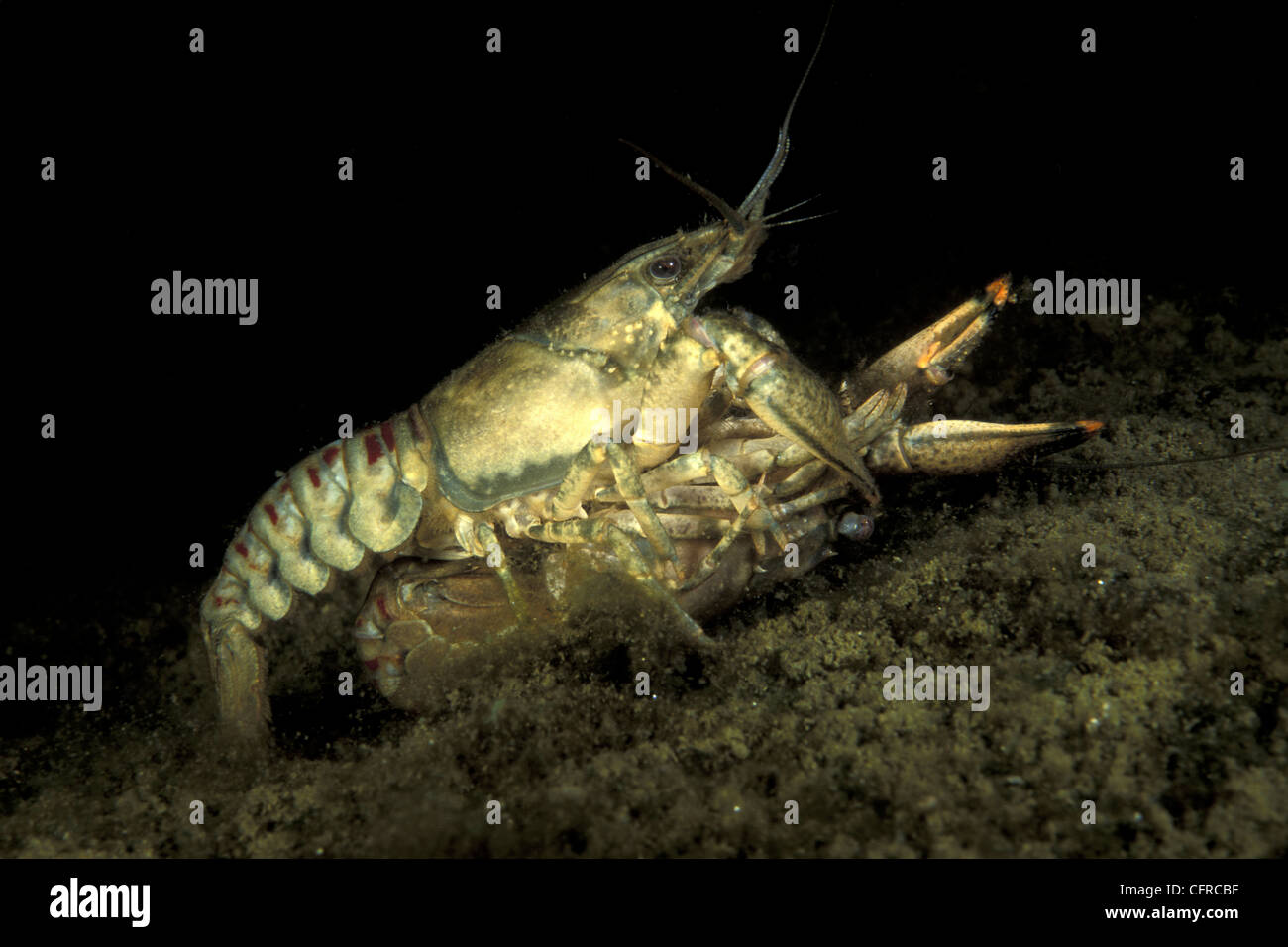

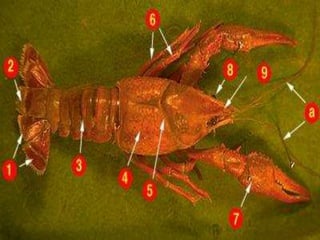

Post a Comment for "44 diagram of a crayfish"